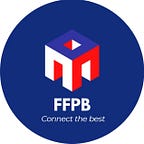Blockchain was first introduced in 2008 as the distributed ledger behind bitcoin transactions. It was created by Satoshi Nakamoto, an unknown person or group of persons, and has been around ever since. But the technology powering this peer-to-peer electronic cash system has grown to take on a life of its own, with interest coming from many quarters.
We’ve covered the evolving blockchain space all year long at FFPB, and saw a succession of new technologies that will reshape and redefine the market in the new year. In this article, we’re going to make a recap of top 5 most prominent blockchain trends in 2022.
Blockchain data sharing
Taking advantage of the features of blockchain technology, such as distributed ledger, smart contract, data trust and traceability, data sharing in blockchain can provide users with more control over their data.
With blockchain data sharing, users will start to ‘own’ their data and decide who has access to it. In 2023 we undoubtedly will see Blockchain data sharing system architectures empower users to gain control over the ownership of their data.
Decentralized architectures and ecosystems
Web 3.0 will enable newer business models based on data ownership where owned digital assets will be the key to gaining access to the more advanced parts of the internet. By moving away from the concepts of “trust” and “permission” presiding in the current internet version, decentralized architectures and ecosystems will become crucial in the development and monetization of digital assets.
Emerging technologies
While blockchain itself has unique security features, it’s still prevailing at its early stage of its research and development.
Blockchain can be used for a variety of financial and non-financial applications, including cryptocurrency, supply chain management, and legal records. In 2023, it’s for sure going to be a great help for the financial and non-financial sectors.
Layer 2
A layer-1 blockchain, such as Bitcoin and Ethereum, is the base protocol that is then used in conjunction with third-party layer-2 protocols. Such protocols are also known as a Layer 2 blockchain, L2 blockchain or primary chain.
Today, this secondary blockchain is expanding use cases to provide a more superlative end-user experience by virtue of higher transactions per second, lower gas fees and the assurance that all transactions, once completed, are irreversibly recorded on the mainnet.
The zero-knowledge proving market
Zero knowledge proofs are ushering in a new era of dapps and blockchains that offer greater scalability and privacy through advanced cryptography. A zero-knowledge proof is a form of cryptography that enables one party in a transaction, the prover, to prove that they have knowledge of information that confirms a statement to be true to another party, the verifier, without revealing what that information is.
We believe Zero knowledge proofs are the next frontier for blockchain innovation that will change the market next year.
Conclusion
If you’re keen to ensure greater blockchain adoption just as we are, follow us on social media to always keep an eye on the industry.
